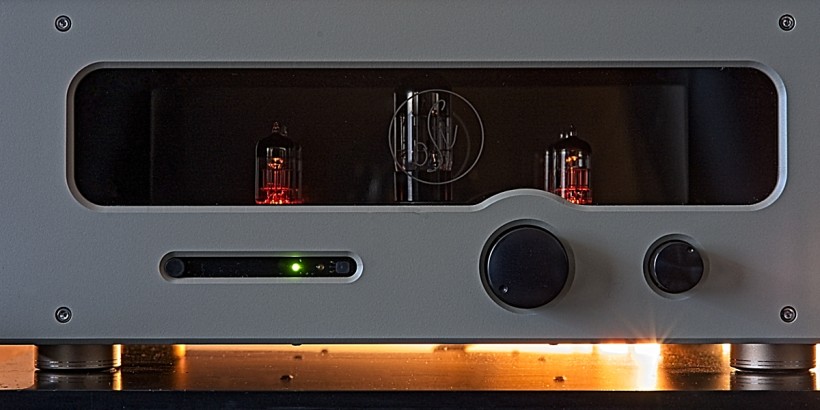Lumin gained a lot of recognition over the years and is associated mainly with high class network products. Machines of this sort are the core of this company’s portfolio indeed, though there’s a place in there for i.e. an audiophile L1 NAS and a full-fledged integrated amplifier – Lumin M1 – which is this review’s hero. Enjoy!
Introduction
With its A1 model, Lumin entered the audio market with a proper bang, that’s unquestionable. To describe this product as a successful one is a very mild statement. Among people known to yours truly and familiar with this machine, each individual held it in very high regard. Lumin A1 is a force to be reckoned with even today, after several years since its launch and in my Lumin T1 review I’ve explained the reason why. The former device not only looks very luxurious, but via heavy price tag it was able to net full attention of high calibre enthusiasts with no-compromise attitude and they did all the rest. Their interest was and still is there and the good word got out in the process. Not only this, Lumin A1’s very easy and intuitive to use interface netted quality user experience, thus was implemented in every device by this company. There’s a lot of logic behind this. If one has a network platform which works as intended, to exploit its potential in one product only would’ve been a major waste. The upshot is obvious, to know one Lumin deck is to know them all.
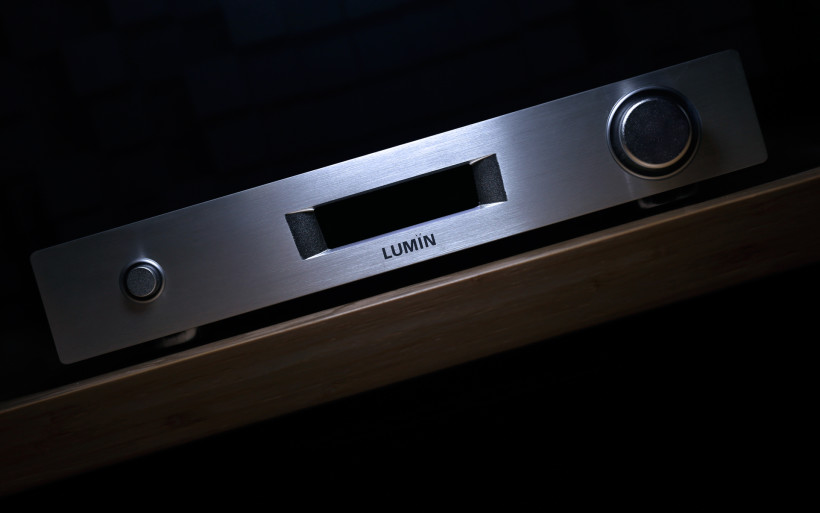 Lumin’s offer hasn’t changed much over the years. A quick glimpse might give the wrong impression that it’s quite stale. At least that’s what several network players with and without DACs on-board, one transport, one audiophile NAS and this review’s hero suggest. One might even say that the same dish is served in several ways, thus it lacks imagination and tastes more or less similarly. Well, something tells me that this is not the case at all. Lumin products seem to be quite the sellers, presumably these days even hotter than years back due to growing audience very much into network playback. If done right, such an infrastructure is exceptionally convenient to use. If it’s additionally focused on sound quality, no enthusiast will move along at least not mildly interested. To be convenient is no crime after all and convenience is Lumin’s middle name.
Lumin’s offer hasn’t changed much over the years. A quick glimpse might give the wrong impression that it’s quite stale. At least that’s what several network players with and without DACs on-board, one transport, one audiophile NAS and this review’s hero suggest. One might even say that the same dish is served in several ways, thus it lacks imagination and tastes more or less similarly. Well, something tells me that this is not the case at all. Lumin products seem to be quite the sellers, presumably these days even hotter than years back due to growing audience very much into network playback. If done right, such an infrastructure is exceptionally convenient to use. If it’s additionally focused on sound quality, no enthusiast will move along at least not mildly interested. To be convenient is no crime after all and convenience is Lumin’s middle name.
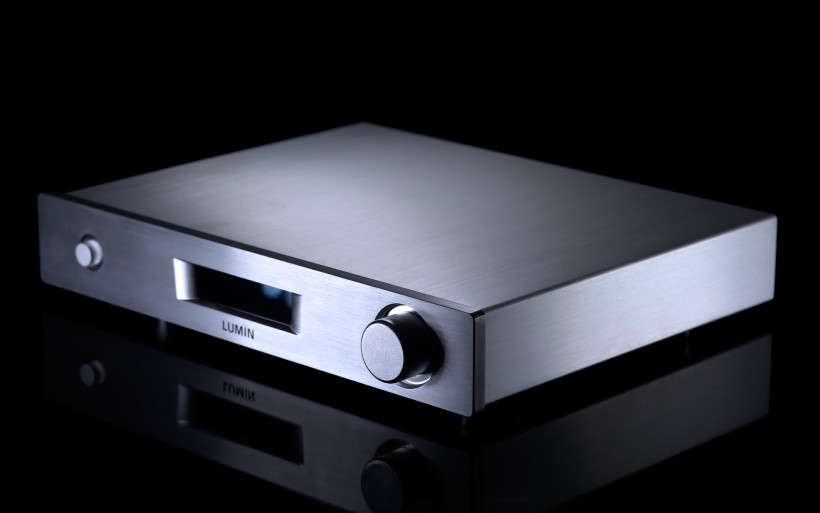 This scribe thinks that – due to steady sales – Lumin’s R&D team doesn’t have a rope around its neck. The company doesn’t have to fuel the fire constantly via new products in several months long intervals just to keep the business going. If I got this right, the main takeaway is lack of time pressure in case of currently developed projects and comfort that goes along with it. If there’s no need to rush things, everything can be thoroughly checked and properly geared up. Instead of releasing beta stage hardware and addressing bugs via customers’ feedback, the R&D crew can work undisturbed, which usually leads to nicely polished effect.
This scribe thinks that – due to steady sales – Lumin’s R&D team doesn’t have a rope around its neck. The company doesn’t have to fuel the fire constantly via new products in several months long intervals just to keep the business going. If I got this right, the main takeaway is lack of time pressure in case of currently developed projects and comfort that goes along with it. If there’s no need to rush things, everything can be thoroughly checked and properly geared up. Instead of releasing beta stage hardware and addressing bugs via customers’ feedback, the R&D crew can work undisturbed, which usually leads to nicely polished effect.
 One might ask why was I on about all this up above and the reason is very simple: Lumin M1 was developed for one year and a half. Knowing that this product’s network related tech and visuals were already available and probably so was its enclosure, well, this is a long time, eh? Is the team responsible for this machine a bunch of slackers then? It’s highly unlikely I think, on the contrary to M1 tweaked over and over again to a point where the key management – people very much into sound quality after all – was perfectly happy with it. If that’s what has really happened, kudos. If not, then not. In any case, Lumin M1 is this review’s main dish, bon appétit.
One might ask why was I on about all this up above and the reason is very simple: Lumin M1 was developed for one year and a half. Knowing that this product’s network related tech and visuals were already available and probably so was its enclosure, well, this is a long time, eh? Is the team responsible for this machine a bunch of slackers then? It’s highly unlikely I think, on the contrary to M1 tweaked over and over again to a point where the key management – people very much into sound quality after all – was perfectly happy with it. If that’s what has really happened, kudos. If not, then not. In any case, Lumin M1 is this review’s main dish, bon appétit.
Build
Lumin M1 is an integrated amplifier, its stereo power amp and a volume control are inside of the same enclosure. On these counts my Trilogy 925 is quite similar, even though its circuitry is very different from the one found in the former deck, which also is a network streamer and a DAC on top of it. And that’s why Lumin M1 is a truly complete package, which requires minimal effort and investment to build a complete audio system around it. A smartphone or a tablet as a remote control, some cables, a router and a pair of either active or passive boxes is all it takes. Not only this, to marry M1 with speakers only is the only reasonable way to exploit all goodness this deck offers. Put simply, it doesn’t need anything else to get going, not even one additional audiophile box, literally nothing at all. And that is truly brilliant, liberating even and can save a lot of cash.
 For now M1 is the only integrated device in the Lumin portfolio. Though my gut tells me that not the last one as such a product swiftly addresses needs of many potential buyers willing to pay for a really good sounding deck capable of addressing each and every one. In short, Lumin M1 is for people not into dedicated rack full of audio hardware but one complete quality box instead. This product is – let’s get this out of the way this early – of audiophile roots, yet exceptionally easy to use and visually safe. From an average consumer’s perspective the M1 conceptually makes a lot of sense and it’s highly likely that it was designed to check if mass market is interested in such machines. It might sound a bit odd as goods of its sort remain far from affordable for many regular folks. But hey, in order to know whether this plan makes any sense, a manufacturer has to at least try to execute it first. Additionally, I see M1 under a roof of an enthusiast fully aware of what Lumin does, probably a happy user of one of this company’s upper echelon machines at work in the main rig, though still in need of something smaller and more cost effective for his/hers second setup.
For now M1 is the only integrated device in the Lumin portfolio. Though my gut tells me that not the last one as such a product swiftly addresses needs of many potential buyers willing to pay for a really good sounding deck capable of addressing each and every one. In short, Lumin M1 is for people not into dedicated rack full of audio hardware but one complete quality box instead. This product is – let’s get this out of the way this early – of audiophile roots, yet exceptionally easy to use and visually safe. From an average consumer’s perspective the M1 conceptually makes a lot of sense and it’s highly likely that it was designed to check if mass market is interested in such machines. It might sound a bit odd as goods of its sort remain far from affordable for many regular folks. But hey, in order to know whether this plan makes any sense, a manufacturer has to at least try to execute it first. Additionally, I see M1 under a roof of an enthusiast fully aware of what Lumin does, probably a happy user of one of this company’s upper echelon machines at work in the main rig, though still in need of something smaller and more cost effective for his/hers second setup.
 Lumin M1 measures (WxDxH) 361x323x58mm and weights no more than 4.5 kilograms, hence is compact, light, flat and square-shaped. Its enclosure is solely made of brushed aluminium. On M1’s front there are; a power button, centrically placed display with Lumin logo a bit down below and a volume knob to the right. That’s it and realistically that’s all our deck needs. One thing I’d change, though. Its power on/off switch protrudes quite a bit though it can be pushed only slightly, thus remains like so all the time. Something smaller, in general more modest and visually more suitable for the product’s front would do far better job, but that’s a minor and a subjective thing. M1’s display shows light blue marks on black background, which became a standard in Lumin machines. It’s petite, hence people with eyesight issues won’t be able to read it from afar, though it’s not a defect or a deal-breaker. All information one might want is displayed either on a smartphone or a tablet via perfectly readable, neatly organized and intuitive Lumin app.
Lumin M1 measures (WxDxH) 361x323x58mm and weights no more than 4.5 kilograms, hence is compact, light, flat and square-shaped. Its enclosure is solely made of brushed aluminium. On M1’s front there are; a power button, centrically placed display with Lumin logo a bit down below and a volume knob to the right. That’s it and realistically that’s all our deck needs. One thing I’d change, though. Its power on/off switch protrudes quite a bit though it can be pushed only slightly, thus remains like so all the time. Something smaller, in general more modest and visually more suitable for the product’s front would do far better job, but that’s a minor and a subjective thing. M1’s display shows light blue marks on black background, which became a standard in Lumin machines. It’s petite, hence people with eyesight issues won’t be able to read it from afar, though it’s not a defect or a deal-breaker. All information one might want is displayed either on a smartphone or a tablet via perfectly readable, neatly organized and intuitive Lumin app.
 Lumin M1’s enclosure design is similar to affordable models of the same company. Instead of one CNC-milled aluminium brick reserved for U1, A1 and S1 decks, M1’s chassis consists of several parts instead and stripped from neatly executed roundings looks more commonly in the process. A thick bar sits on its front, whereas top and sides form a reversed U-shaped aluminium plate which covers everything else. In spite of not being a top shelf Lumin product, cleanly and honestly built M1 looks elegant, minimalist and honest for the coin. Four aluminium feet with rubber washers are to be found on its underbelly and these are used in all Lumin products. The M1’s rear sports no hood and that’s something this manufacturer got us used to. Still, this small alteration doesn’t hurt the product in any way, makes speaker terminals more accessible in the process and makes sense.
Lumin M1’s enclosure design is similar to affordable models of the same company. Instead of one CNC-milled aluminium brick reserved for U1, A1 and S1 decks, M1’s chassis consists of several parts instead and stripped from neatly executed roundings looks more commonly in the process. A thick bar sits on its front, whereas top and sides form a reversed U-shaped aluminium plate which covers everything else. In spite of not being a top shelf Lumin product, cleanly and honestly built M1 looks elegant, minimalist and honest for the coin. Four aluminium feet with rubber washers are to be found on its underbelly and these are used in all Lumin products. The M1’s rear sports no hood and that’s something this manufacturer got us used to. Still, this small alteration doesn’t hurt the product in any way, makes speaker terminals more accessible in the process and makes sense.
 Only necessary things are to be found on M1’s rear. Main power switch sits next to an IEC socket with self-replaceable fuse and grounding pin nearby. Speaker terminals with translucent acrylic parts further to the right are big, easy to use and made by CNC. These will work with any type of cable finishes including naked wire. Next in line are; one RJ-45 socket, two USB type As to connect a separate HDD/pendrive and a small reset button. One might say that all this is not much and Lumin M1 stripped from popular inputs and outputs, both digital and analogue, is crippled. Not. The product itself was designed to work as a one-box cost effective affair with minimal requirements, hence one either takes it or leaves it. I was told recently that M1s are sold with EzCAP audio grabber dongle, which allows one to connect a separate power amp to this integrated deck. Kudos.
Only necessary things are to be found on M1’s rear. Main power switch sits next to an IEC socket with self-replaceable fuse and grounding pin nearby. Speaker terminals with translucent acrylic parts further to the right are big, easy to use and made by CNC. These will work with any type of cable finishes including naked wire. Next in line are; one RJ-45 socket, two USB type As to connect a separate HDD/pendrive and a small reset button. One might say that all this is not much and Lumin M1 stripped from popular inputs and outputs, both digital and analogue, is crippled. Not. The product itself was designed to work as a one-box cost effective affair with minimal requirements, hence one either takes it or leaves it. I was told recently that M1s are sold with EzCAP audio grabber dongle, which allows one to connect a separate power amp to this integrated deck. Kudos.
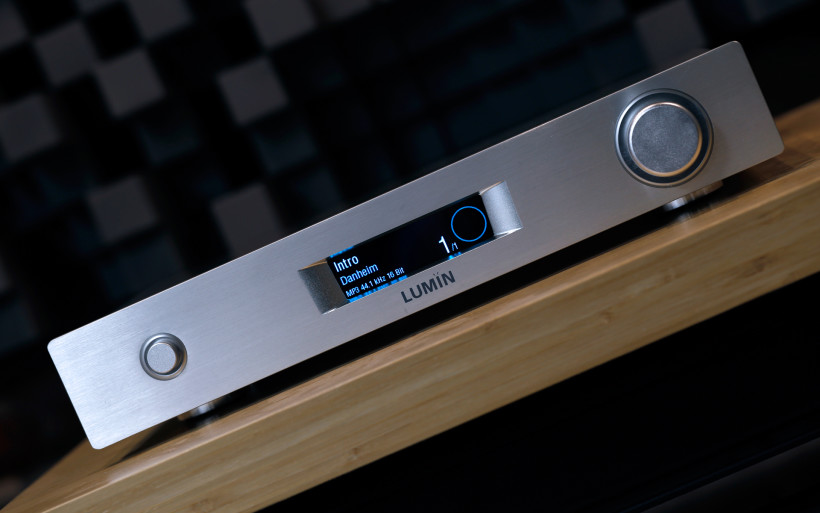 Getting to Lumin M1’s innards isn’t difficult at all. It’s not crowded in there. Two easily distinguishable parts are PCB with all electronics and a large SMPS type power supply hid under a screen. The latter indicates that in case of M1 a PSU in a separate box is off the table and reserved for upper echelon Lumin goods. Fair enough. This deck’s heart is a CPU with a small radiator, whereas an FPGA a bit further is responsible for data manipulation and TI’s TAS558 and TAS5624A silicon handle PCM to PWM conversion. The PWM modulation scheme explains why Lumin M1 doesn’t have any d/a chip on-board, it simply doesn’t need one. This product’s topology is almost entirely digital, even its TAS5614A power amp is of class D and volume attenuation is digital too, that large volume knob on M1’s front is just a physical part of the interface and not a regular pot. The signal becomes analogue at the very end of the circuitry , in a coils and capacitors based filter located just before speaker terminals. All in all, audiophile devices like this one are very rare.
Getting to Lumin M1’s innards isn’t difficult at all. It’s not crowded in there. Two easily distinguishable parts are PCB with all electronics and a large SMPS type power supply hid under a screen. The latter indicates that in case of M1 a PSU in a separate box is off the table and reserved for upper echelon Lumin goods. Fair enough. This deck’s heart is a CPU with a small radiator, whereas an FPGA a bit further is responsible for data manipulation and TI’s TAS558 and TAS5624A silicon handle PCM to PWM conversion. The PWM modulation scheme explains why Lumin M1 doesn’t have any d/a chip on-board, it simply doesn’t need one. This product’s topology is almost entirely digital, even its TAS5614A power amp is of class D and volume attenuation is digital too, that large volume knob on M1’s front is just a physical part of the interface and not a regular pot. The signal becomes analogue at the very end of the circuitry , in a coils and capacitors based filter located just before speaker terminals. All in all, audiophile devices like this one are very rare.
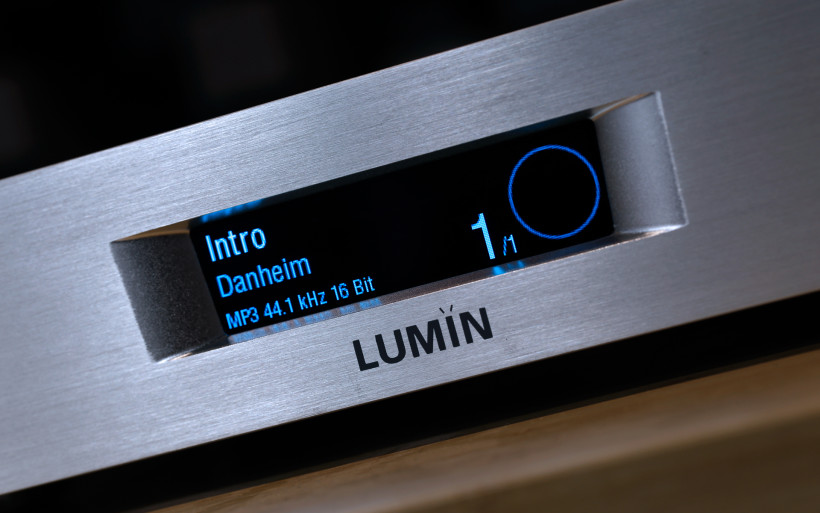 Lumin M1 handles PCM up to 32 bit / 384 kHz, DSD128 (5.6MHz) files (via DoP) and MQA. It’s worth to know thought that every stream that goes in is resampled to 24 bit / 176.4 kHz. The product will work with majority of audio files available and its amplifier (60/100wpc into 4/8Ω respectively) will handle literally every speakers out there. Lumin M1 needs to be connected to a local area network and there’s no way around it, therefore a router and a regular LAN cable are a must. Then a tablet or a smartphone comes into play. Once connected to a wireless network broadcasted by the same router, it serves as a remote control through Lumin’s proprietary free app and that’s it, M1 should be detected and fully operable with no issues. Setting up a storage from where all music will be streamed is the next step and there are several choices here; a NAS married to a router, a pendrive or a portable HDD loaded with files and hooked to M1’s USB type A ports directly or streaming from web directly. Tidal, Quobuz and AirPlay are handled natively, though this list will get bigger with future firmware/app upgrades. The whole described process takes several minutes tops and is very user-friendly.
Lumin M1 handles PCM up to 32 bit / 384 kHz, DSD128 (5.6MHz) files (via DoP) and MQA. It’s worth to know thought that every stream that goes in is resampled to 24 bit / 176.4 kHz. The product will work with majority of audio files available and its amplifier (60/100wpc into 4/8Ω respectively) will handle literally every speakers out there. Lumin M1 needs to be connected to a local area network and there’s no way around it, therefore a router and a regular LAN cable are a must. Then a tablet or a smartphone comes into play. Once connected to a wireless network broadcasted by the same router, it serves as a remote control through Lumin’s proprietary free app and that’s it, M1 should be detected and fully operable with no issues. Setting up a storage from where all music will be streamed is the next step and there are several choices here; a NAS married to a router, a pendrive or a portable HDD loaded with files and hooked to M1’s USB type A ports directly or streaming from web directly. Tidal, Quobuz and AirPlay are handled natively, though this list will get bigger with future firmware/app upgrades. The whole described process takes several minutes tops and is very user-friendly.
Sound
In order to review Lumin M1, Boenicke W8 and Gradient Evolution speakers were used and so was English Trilogy 925 integrated amplifier. As per usual, LampizatOr Golden Gate (Psvane WE-101D + KR Audio 5U4G Ltd. Ed.) handled the d/a conversion task and was fed via Asus UX305LA. Both listed floorstanders worked alternately with both Lumin M1 and my reference rig. The evaluation listening period was based fully on my own files to match what my reference DAC is used to, whereas streaming functionality was consciously omitted.
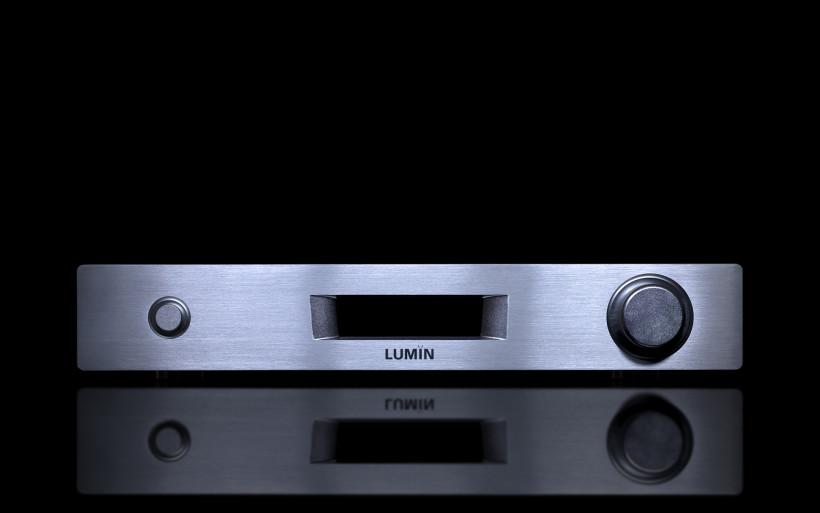 After getting familiar with paragraph about Lumin M1’s innards, many individuals will quite satirically approach this very chapter. Digital class D, lack of any regular d/a conversion circuitry, somewhat limited power, small weight and probably bunch of other things are the reasons, whereas Lumin M1 very efficiently and swiftly teaches humility. This is a very serious deck for the money to begin with. Class D is oftentimes associated with well-controlled bass, matte texturing and in general lifeless sound, yet this time around this is not the case, not in the slightest and not in any obvious way. The M1 machine turned out to be a typical Lumin case, thus broke free from these stereotypical chains easily and the more it was on, the more impressed I got.
After getting familiar with paragraph about Lumin M1’s innards, many individuals will quite satirically approach this very chapter. Digital class D, lack of any regular d/a conversion circuitry, somewhat limited power, small weight and probably bunch of other things are the reasons, whereas Lumin M1 very efficiently and swiftly teaches humility. This is a very serious deck for the money to begin with. Class D is oftentimes associated with well-controlled bass, matte texturing and in general lifeless sound, yet this time around this is not the case, not in the slightest and not in any obvious way. The M1 machine turned out to be a typical Lumin case, thus broke free from these stereotypical chains easily and the more it was on, the more impressed I got.
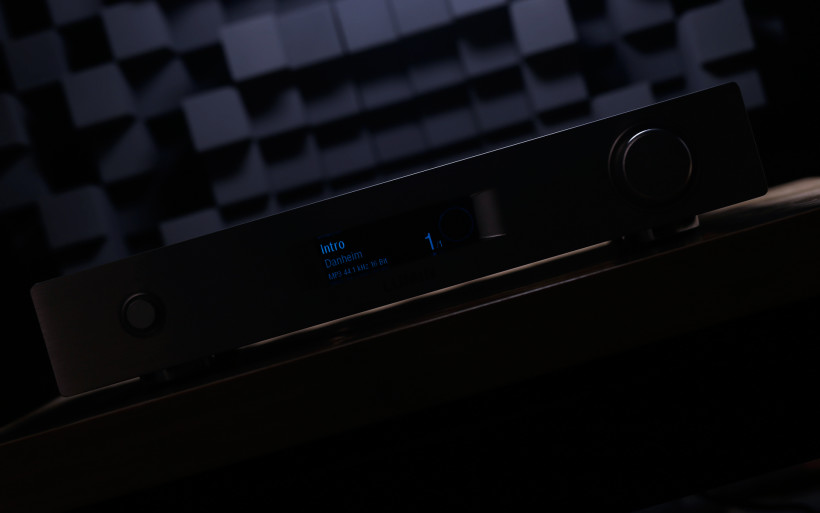 Many manufactures can be said that they have their unique sound profile and Lumin easily fits this description too. For instance, each deck by this company I’ve auditioned in the past put joy on the pedestal via conservatively injected yet present saturation. With Lumin it always was more about organic tissue on a well-sketched bones rather than blunt warmth and informational dilution. That’s why S1, A1 and T1 decks described as warm are a major misunderstanding in my book. Each of these sounded unusually physiologically, moist, smooth and clear at the same time. Neither was claustrophobic, stuffy, veiled or obese and the same story was with thin, piercing or artificial sound. Point being, a concoction of carefully balanced features Lumin delivered regardless of a model was always a joy to audition and this company’s integrated deck followed in this vein as well.
Many manufactures can be said that they have their unique sound profile and Lumin easily fits this description too. For instance, each deck by this company I’ve auditioned in the past put joy on the pedestal via conservatively injected yet present saturation. With Lumin it always was more about organic tissue on a well-sketched bones rather than blunt warmth and informational dilution. That’s why S1, A1 and T1 decks described as warm are a major misunderstanding in my book. Each of these sounded unusually physiologically, moist, smooth and clear at the same time. Neither was claustrophobic, stuffy, veiled or obese and the same story was with thin, piercing or artificial sound. Point being, a concoction of carefully balanced features Lumin delivered regardless of a model was always a joy to audition and this company’s integrated deck followed in this vein as well.
 Lumin M1 very quickly turned out to be a very posh performer, even though this statement isn’t too informational. But after taking into account sharpness free attitude, spatially grand and multilayered picture, well-developed informational tissue, unusual vividness, the ability to involve a listener with ease, organic texturing, colour temperature in check and in general well-thought seasoning, this small integrated box described as posh is legit. Lumin M1 sounds very much audiophile alike, yet is clad in a suit which a regular customer will surely enjoy. Such tuning is both safe and refined. On the other hand, any audio vet quickly and with ease will decipher what this deck really is. The quality mandatory for this to happen surely is there.
Lumin M1 very quickly turned out to be a very posh performer, even though this statement isn’t too informational. But after taking into account sharpness free attitude, spatially grand and multilayered picture, well-developed informational tissue, unusual vividness, the ability to involve a listener with ease, organic texturing, colour temperature in check and in general well-thought seasoning, this small integrated box described as posh is legit. Lumin M1 sounds very much audiophile alike, yet is clad in a suit which a regular customer will surely enjoy. Such tuning is both safe and refined. On the other hand, any audio vet quickly and with ease will decipher what this deck really is. The quality mandatory for this to happen surely is there.
 Lumin M1 didn’t handle bass in the usual way class D manner, namely neither was it after speed and control in the first place, nor has it made this FR any thinner or less tuneful than it should. On the contrary, density boosted a bit netted the outcome gutsier than usual. After several hours of going through my regular repertoire, the impression of downstairs department presented like so was actually a part of a far bigger and very logical scheme. Lumin M1 neither slapped my ears with its control and restrictive downstairs potential and feistiness nor it reached to the deepest basement level possible. It played with bass richness and its differentiation instead. When it was needed, both undiluted or unnaturally softened presence and punchiness were a part of the whole, albeit without extra emphasis. Bass seemed very much universal and coherent with just a bit of sweetening additives. The M1 deck sounded very dignified so to speak, not as fast as i.e. JOB 225, though music demanding on coherence and ‘here and now’ counts was showcased like so with ease.
Lumin M1 didn’t handle bass in the usual way class D manner, namely neither was it after speed and control in the first place, nor has it made this FR any thinner or less tuneful than it should. On the contrary, density boosted a bit netted the outcome gutsier than usual. After several hours of going through my regular repertoire, the impression of downstairs department presented like so was actually a part of a far bigger and very logical scheme. Lumin M1 neither slapped my ears with its control and restrictive downstairs potential and feistiness nor it reached to the deepest basement level possible. It played with bass richness and its differentiation instead. When it was needed, both undiluted or unnaturally softened presence and punchiness were a part of the whole, albeit without extra emphasis. Bass seemed very much universal and coherent with just a bit of sweetening additives. The M1 deck sounded very dignified so to speak, not as fast as i.e. JOB 225, though music demanding on coherence and ‘here and now’ counts was showcased like so with ease.
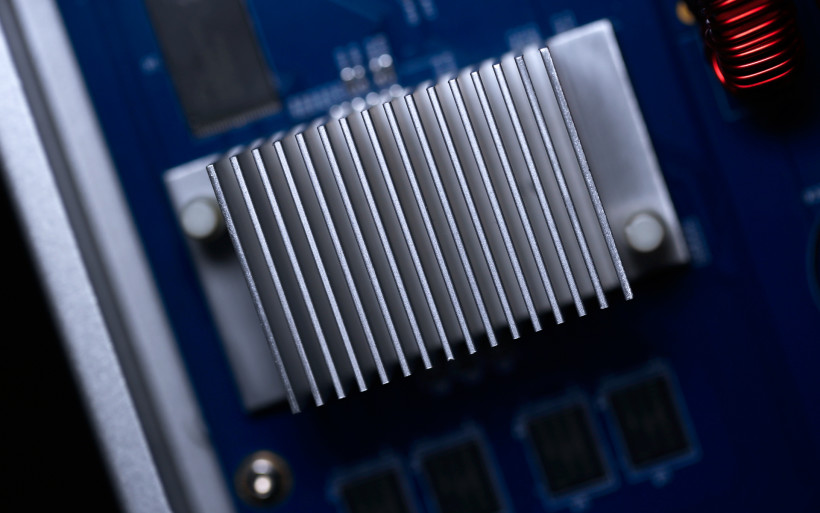 Lumin M1 handled everything above bass equally tastefully. Very quickly it became obvious that it was designed to serve music and not individual sounds. Midrange always sounded ductile; neither too contour nor brazen but natural and fluent without a hint of veil and upper registers were quite similar. Free from abnormal shine and pleasant, highs were simply tuned to be enjoyable on ears and not even slightly tiresome, whereas this FR’s smoothness, nice connection with everything down below and generous substance did all the rest. Here it’s worth pointing out that Lumin M1’s audible analytic power was somewhat limited, which I considered as a sign of careful balancing act and not a drawback. This machine’s focus always was on quality and not quantity.
Lumin M1 handled everything above bass equally tastefully. Very quickly it became obvious that it was designed to serve music and not individual sounds. Midrange always sounded ductile; neither too contour nor brazen but natural and fluent without a hint of veil and upper registers were quite similar. Free from abnormal shine and pleasant, highs were simply tuned to be enjoyable on ears and not even slightly tiresome, whereas this FR’s smoothness, nice connection with everything down below and generous substance did all the rest. Here it’s worth pointing out that Lumin M1’s audible analytic power was somewhat limited, which I considered as a sign of careful balancing act and not a drawback. This machine’s focus always was on quality and not quantity.
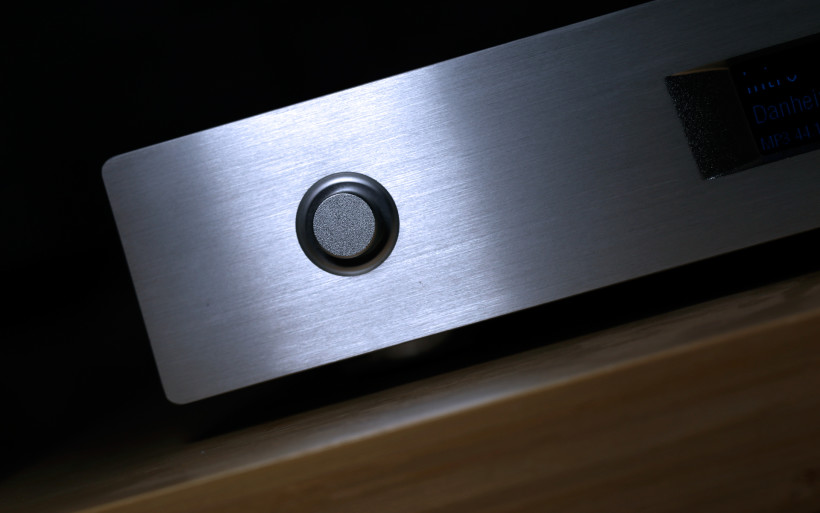 Lumin M1 performed in a properly spacious although not boosted way. It was audible that every piece of music was in the right place and its scale and proportions were in check with speakers capable of delivery in this regard in particular. Here my reference integrated along with Boenicke W8 floorstanders and LampizatOr Golden Gate DAC painted far grander, more present and denser picture. Trilogy 925 fronted by this Polish source is a duo times costlier in comparison to the M1 and performance between these reflected it. A swap from this pricey team to Lumin’s deck was severe, that goes without saying. But here’s the kicker; this small aluminium box got the job done on every count there was. Its civilized, coherent and not overdone sound left me impressed each and every time past the big rig audition. Heck, even in the context of sheer space created, the integrated by Lumin had nothing to be ashamed of, though it handled this aspect on its own and respectable way. It emphasized events directly in front of me, thus sported intimate and in general atmosphere focused potential. Still, once a given track demanded something far deeper or wider, it happened. Not only this, the M1 handled notorious Boenicke W8 load nicely up to a point, though with easier to drive Gradient Evolution speakers the outcome was far more enjoyable. Along with those Finnish boxes, Lumin’s small integrated was very smooth, spacious, with literally tectonic bass potential and an attitude grand enough to satisfy many imaging freaks out there. In spite of a character of its own, this review’s hero showcased what Evolution floorstanders were all about with no ifs or buts. The setup these two created turned out to be very synergistic, utterly impressive and represented terrific value for the coin. Bravo!
Lumin M1 performed in a properly spacious although not boosted way. It was audible that every piece of music was in the right place and its scale and proportions were in check with speakers capable of delivery in this regard in particular. Here my reference integrated along with Boenicke W8 floorstanders and LampizatOr Golden Gate DAC painted far grander, more present and denser picture. Trilogy 925 fronted by this Polish source is a duo times costlier in comparison to the M1 and performance between these reflected it. A swap from this pricey team to Lumin’s deck was severe, that goes without saying. But here’s the kicker; this small aluminium box got the job done on every count there was. Its civilized, coherent and not overdone sound left me impressed each and every time past the big rig audition. Heck, even in the context of sheer space created, the integrated by Lumin had nothing to be ashamed of, though it handled this aspect on its own and respectable way. It emphasized events directly in front of me, thus sported intimate and in general atmosphere focused potential. Still, once a given track demanded something far deeper or wider, it happened. Not only this, the M1 handled notorious Boenicke W8 load nicely up to a point, though with easier to drive Gradient Evolution speakers the outcome was far more enjoyable. Along with those Finnish boxes, Lumin’s small integrated was very smooth, spacious, with literally tectonic bass potential and an attitude grand enough to satisfy many imaging freaks out there. In spite of a character of its own, this review’s hero showcased what Evolution floorstanders were all about with no ifs or buts. The setup these two created turned out to be very synergistic, utterly impressive and represented terrific value for the coin. Bravo!
Summary
The sensation of M1 made by the very same people responsible i.e. for A1 and S1 is omnipresent. This compact deck is polished, sounds great, works like a charm and there’s nothing to dislike about it. It’s actually quite surprising that this small box is what it is.
Lumin M1 is not as posh looker as top tier models by the same manufacturer, but in general really well-made nonetheless. Precisely assembled and visually appealing aluminium enclosure plus intuitive interface and easy setup process get the job done as nicely as per usual. There’s nothing to not like, not for Lumin M1’s asking price. Perhaps if it was twice as high, maybe then. But it is what it is. And what is is really good!
Lumin M1 was designed to work as a standalone minimalist deck and as such it can’t be married to say a separate power amp in any obvious way. Here EzCAP audio grabber adds this functionality, yet the initial goal was to deliver a complete solution which needs only a pair of speakers and that’s it. Lumin’s integrated is all about simplicity and that’s very high value right there, any attempt to decompose this neatly executed one-box masterplan will miss the point completely. There’s nothing wrong with multifunctional audio hardware as long as it’s able to cover most bases with class and that’s what Lumin M1 does exactly.
Being skeptical about Lumin M1 because of its innards and topology can’t be justified, simply because it’s a great performer. It puts music on the pedestal as pronouncedly as other machines by the same manufacturer and it serves it in pleasant and not overdone way. This review’s hero is the proof that such an outcome is perfectly possible with class D on-board. If you’re on a lookout for a sound wise grand, enjoyable and complete network integrated amp which needs only a pair of speakers to get going and still affordable on top of that, Lumin M1 is the one to go after. Terrific price-to-performance ratio, bravo and ’till next time!
Associated equipment:
- Amplifiers: Trilogy 925
- Sources: Lampizator Golden Gate (Psvane WE101D-L + KR Audio 5U4G Ltd. Ed.)
- Speakers: Boenicke Audio W8, Gradient Evolution
- Transports: Asus UX305LA
- Speaker cables: Forza AudioWorks Noir Concept, Audiomica Laboratory Celes Excellence
- Interconnects: Forza AudioWorks Noir, Audiomica Laboratory Erys Excellence
- Power supply: Gigawatt PF-2 + Gigawatt LC-2 MK2 + Forza AudioWorks Noir Concept/Audiomica Laboratory Ness Excellence
- Rack: Franc Audio Accesories Wood Block Rack
- Music: NativeDSD
Retail prices of reviewed components in EU (incl. VAT):
- Lumin M1: €2’999
Manufacturer: Lumin
































